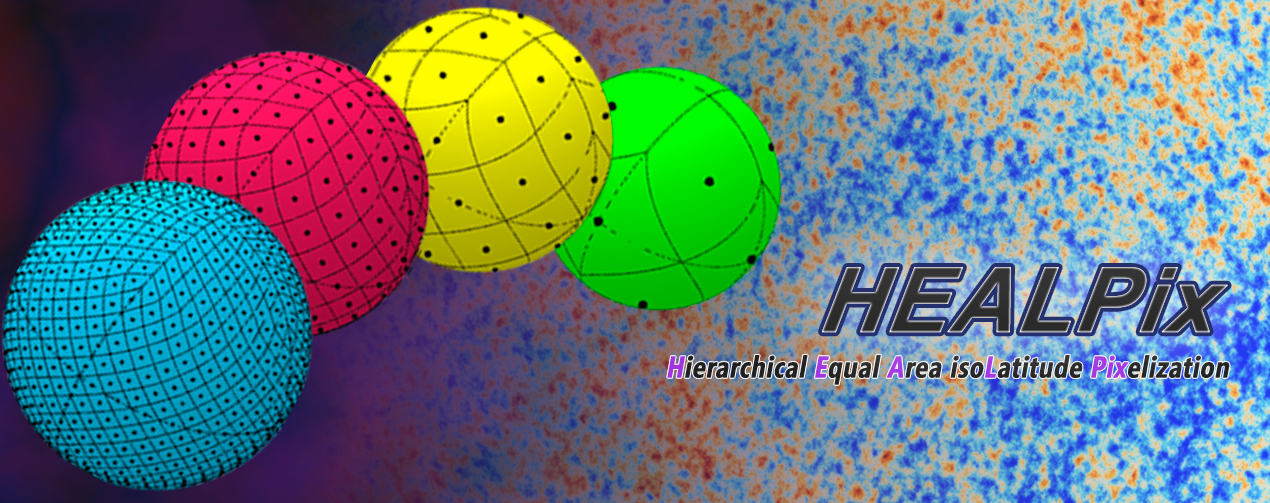
History
HEALPix was originally devised in early 1997 by Krzysztof M. Gorski at the Theoretical Astrophysics Center (TAC) in Copenhagen, Denmark (he is currently at the Jet Propulsion Laboratory). Early development of the HEALPix concept and initial implementation was made in the spring of 1997 in collaborative work of K.M. Gorski with Eric Hivon (currently at the Institut d'Astrophysique de Paris, IAP). Benjamin D. Wandelt, then at the TAC (now at Sorbonne University and the IAP), has contributed critically to the further development of HEALPix and related mathematical methods. Frode K. Hansen, then at the TAC (now at University of Oslo), Anthony J. Banday, then at Max Planck Institut fur Astrophysik, MPA, Garching, Germany (now at Institut De Recherche En Astrophysique Et Planetologie, IRAP, CNRS, Toulouse, France) and Matthias Bartelmann (then at MPA, now at Institut fur Theoretische Astrophysik, Heidelberg, Germany) provided invaluable input required to make possible the first large release of the HEALPix software (Version 1.10).
The early releases of the HEALPix software benefited from the continuing dedicated effort of Eric Hivon, Martin Reinecke (MPA), and Anthony J. Banday, the work of William O'Mullane (Vera C. Rubin Observatory), Hans Kristian Eriksen (University of Oslo), Snorre Boasson (NTNU), David Larson (JHU), Emmanuel Joliet (then at ESA, now at IPAC), Paddy Leahy (Manchester University), Graca Rocha (JPL), and numerous contributions made by HEALPix users (see the Acknowledgements).
In the late 1990s, HEALPix was accepted as a concept data structure, and software infrastructure by the WMAP and Planck projects. Since 2003, HEALPix development centered at JPL/Caltech, and its distribution web page became http://healpix.jpl.nasa.gov. Later on, a stable distribution site emerged at Sourceforge https://sourceforge.net/projects/healpix/).
The active support of HEALPix (present software version 3.83) involves the following people: K.M. Gorski (JPL/Caltech), E. Hivon (IAP), M. Reinecke (MPA-Garching), and A.J. Banday (IRAP).
This effort is not supported by any dedicated funds, and depends entirely on the voluntary collaboration of the mentioned individuals.